What to Consider During the Heat Cycle of Female Dogs and What Are the Phases of Estrus? Learn more about the topic here.
- Tips & Tricks to Understand Your Dog’s Estrus
- What happens to my dog when she’s in heat?
- The First Heat – Symptoms of the First Estrus
- The Second Estrus – and All Subsequent Ones
- Staying Active During Heat: What to Consider?
- Pseudopregnancy – How Can I Help My Female Dog?
- Hygiene During Heat – What Does My Female Dog Need?
Tips & Tricks to Understand Your Dog’s Estrus
If your four-legged companion is a female dog, you’re probably an expert in this field yourself. But do you really know what happens to your dog’s body and mind during this time to respond optimally to her needs? Or is your walk with her still a challenging experience during the heat phase? Get tips and tricks on how to navigate through this hormone-rich period together.
Caution, in Heat!
Depending on the size and age of your female dog, it hits her once or twice a year: the heat is approaching, and each time you find yourself facing challenges to navigate through this phase as smoothly as possible.
But first things first: not only can this time of year be nerve-wracking for you, but it’s also equally challenging for your canine friend. To make this time as uncomplicated as possible, you should know what is happening with your furry friend and why she behaves the way she does.
No matter how much your four-legged friend frustrates you during this time, it’s essential to give her a sense of security. Treat her as lovingly as always – this can be achieved, especially with a tasty treat now and then.
What happens to my dog when she’s in heat?
The entire estrus cycle of your furry friend can be divided into four phases, which more or less always follow a specific pattern. These estrus phases include:
Proestrus
In this first phase of estrus, your female dog experiences a deep red, bloody, and viscous vaginal discharge. She starts to become more attractive to males but is not yet fertile and forcefully wards off all suitors. The first phase lasts an average of 9 days but varies like the menstrual cycle in humans and can last between 3 and 17 days.
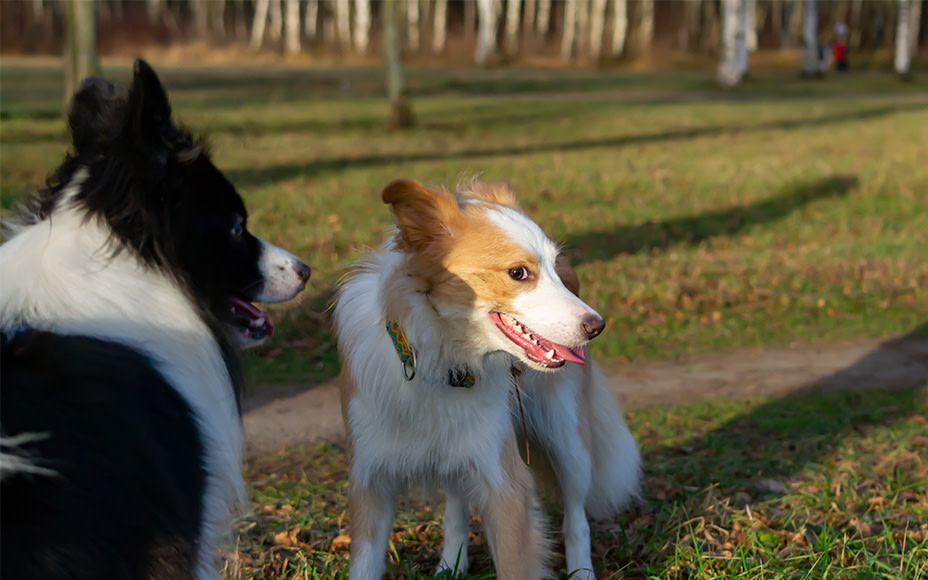
Estrus
The second phase of your furry friend’s heat is characterized by her fertility and a watery, light red vaginal discharge. During this time, several consecutive ovulations occur in your dog’s body, lasting an average of up to 9 days. The duration can also vary between 2 and 21 days.
Thin and light red blood is a clear sign of fertility, and your female dog will allow mating during encounters with males – if you don’t want offspring from your female dog, you should be extra careful during this phase. Heat is to be expected during this phase.
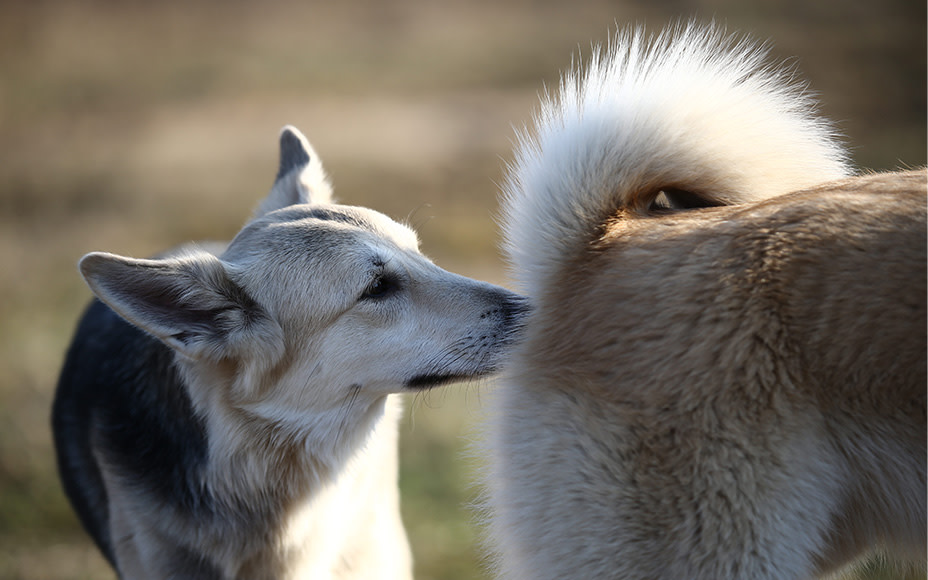
Metestrus (diestrus)
For your walks, this phase means relaxation as your female dog is no longer fertile and no longer shows vaginal discharge. If you have decided, in consultation with a veterinarian, to mate your female dog in phase 2, it will take about 63 days from now until the birth of her puppies.
If not, this phase still lasts 2-3 months, during which a lot happens hormonally and can also affect your dog’s mood. If she becomes particularly cuddly and clingy during this time, you should observe her. Seeking closeness, nest building, and hoarding stuffed animals and toys in her basket can be signs of pseudopregnancy. You will learn more about this shortly!
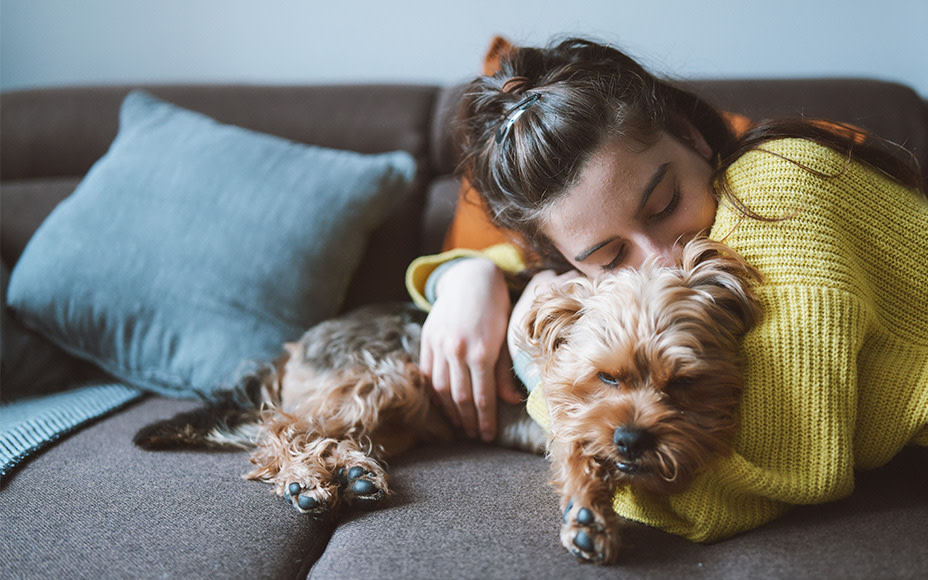
Anestrus
From now on, the period until the next heat begins; the current one ends with this phase. Your four-legged friend will no longer show external signs, and her uterus comes to rest.
The First Heat – Symptoms of the First Estrus
If your furry girl stays out late at night, sneaks out secretly, hangs out on Instagram, and the neighborhood dogs queue up at your doorstep, then it’s time: puberty is knocking on your dog’s door.
First symptoms of estrus can include:
- Increased marking during your walks
- Your female dog becomes a kind of magnet for males.
- Barking or snapping at persistent males.
- Swollen vulva and increased licking of it.
- Poor recall and increased distractibility.
- Unusual clinginess and seeking of closeness.
- A certain lethargy with simultaneous restlessness.
From the age of 6 months, your female dog can go into heat; sometimes heat may not start until the second year of life. This is especially true for larger dog breeds and is unproblematic. It is not uncommon to experience the so-called silent heat, in which your female dog does not show vaginal discharge in Phases 1 and 2 but is still fertile.
An exciting time of change begins, as this new phase brings several changes and responsibilities for you and your four-legged companion. Questions like “Do I want offspring from my female dog in the future?” ideally occupied your thoughts before acquiring your dog.
If you plan such things, always discuss this intention with your veterinarian, who can provide information on puppy planning, inheritance, and measures related to the topic.
The Second Estrus – and All Subsequent Ones
The first heat is over! But when does the second one occur? Similar to humans, estrus in female dogs is a cyclic recurring process. Generally, dogs go into heat twice a year. The interval between heats depends on various factors such as size and age. Individual predispositions also influence the duration between heats. Smaller female dogs go into heat approximately every 6 months, while larger ones tend to go into heat every 8 to 9 months.
Staying Active During Heat: What to Consider?
As soon as you notice an above-average interest from the male dog world in your furry friend, you should prepare for a few behavioral rules during walks to keep it stress-free for both of you. If your female dog tends to be less energetic during her heat, diverse walks are especially important.
Aggressive male dogs can be a high-stress factor for your beloved pet during this time, so it is advisable to shift walks to wooded areas and avoid contact with male dogs as much as possible. In any case, if a situation arises where a male dog sniffs and harasses your female dog persistently, leave immediately to reduce stress for her.
Since the transition from Phase 1 to 2 can be gradual, and your female dog might seek proximity to males the next morning, you should not let her run freely during the entire heat period.
The risk of her impulsively escaping due to hormones and enjoying a date with Beagle Robby is high – during this time, simply use long leashes to allow your furry friend some exercise. If you encounter freely roaming male dogs during your walks, kindly ask other dog owners to put their dogs on a leash due to the circumstances.
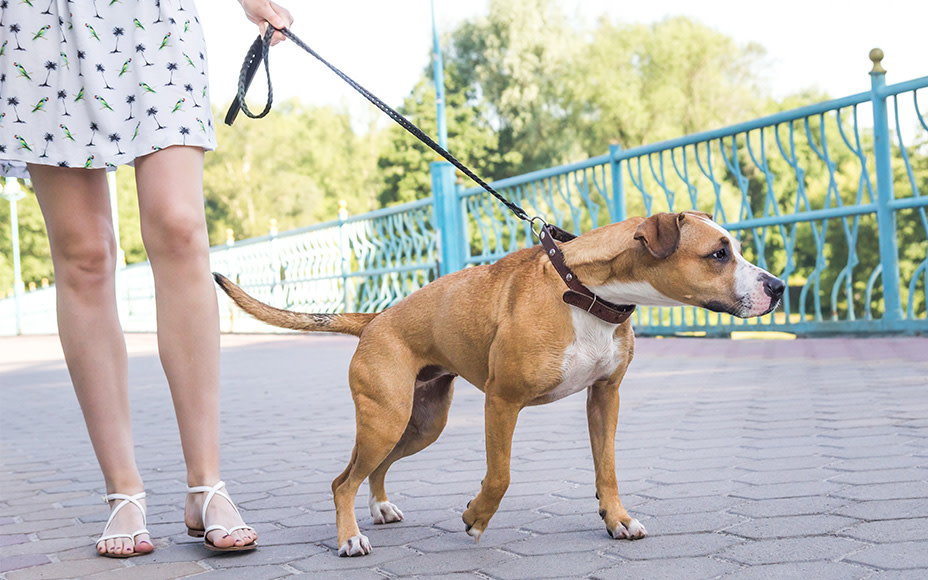
Pseudopregnancy – How Can I Help My Female Dog?
Are there situations where a veterinarian should be consulted? Yes! Not every female dog experiences everything as it should during the 3rd phase of heat after fertility has ended. You might observe that your furry friend appears melancholic, more clingy than usual, and starts nest-building, even though no puppies are on the way. Some female dogs also exhibit aggressive or indifferent behavior. This includes hoarding toys, stuffed animals, and shoes.
If this is the case with your female dog, you should observe her closely as she is likely experiencing pseudopregnancy. What does that mean? During pseudopregnancy, female dogs imagine expecting offspring even when they are not pregnant. They take all necessary precautions, such as nest-building. The hormone progesterone is released at the end of the 2nd phase, whether pregnant or not. This hormone stimulates the growth of mammary glands – under normal circumstances, milk production remains low, and most owners don’t notice it. However, if your female dog is pseudopregnant, the mammary glands will continue to swell, leading to active milk production.
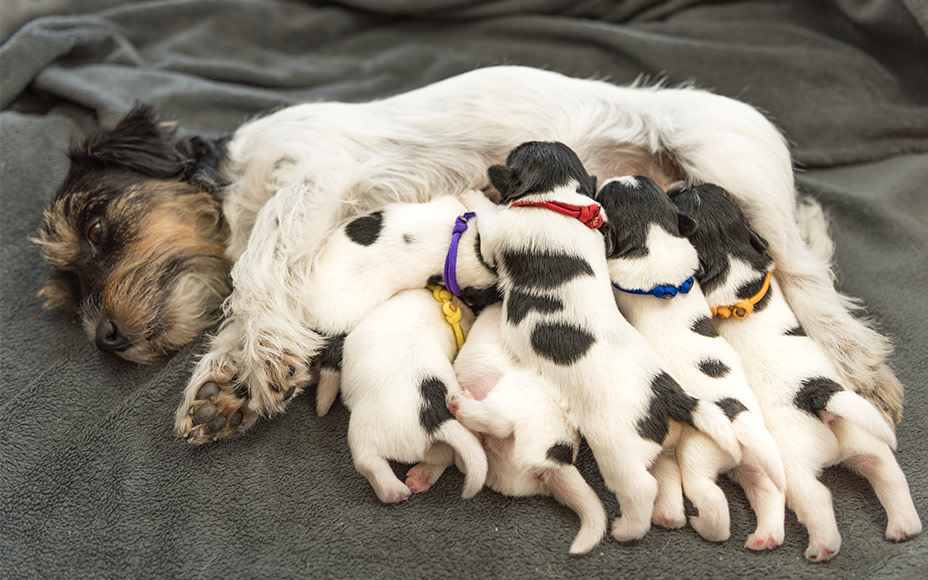
During this time, provide your female dog with a varied daily routine. Take her for long walks, possibly change the feeding times, and remove any toys and items she uses for nest-building. Prevent your furry friend from licking her mammary glands, as this can intensify milk production.
Never squeeze the mammary glands, as it can lead to increased milk production and infections. If your dog’s condition does not improve, consult a veterinarian. A vet can end pseudopregnancy by administering hormones. For female dogs that regularly experience pseudopregnancy, spaying may be a sensible option. Keep in mind that spayed female dogs tend to gain weight, and an adapted, healthy diet is advisable.
Hygiene During Heat – What Does My Female Dog Need?
It is entirely natural for your female dog to lose more body fluids during this time, so do not make her feel unclean, and never scold her for it.
And besides, wiping blood off the tiles is a thing of the past; nowadays, many manufacturers offer protective pants that effectively catch your dog’s blood and are comfortable to wear. However, these are not intended for contraception, and an unplanned mating cannot be avoided! You don’t need to bathe or wash your female dog during this time as she has an increased need to groom herself during heat. Conduct regular coat care as usual.


